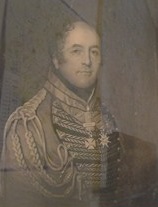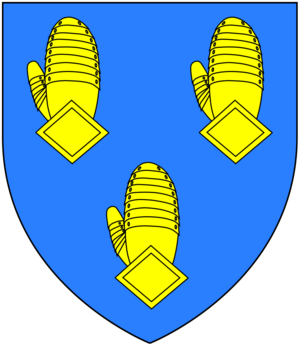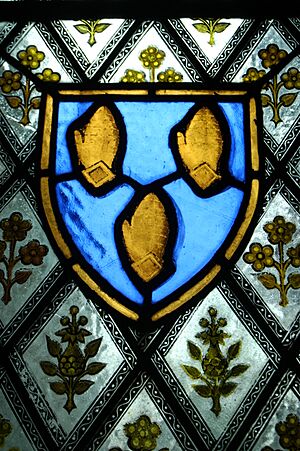Henry Fane (British Army officer) facts for kids
Quick facts for kids
Sir Henry Fane
|
|
|---|---|

Sir Henry Fane
|
|
| Born | 26 November 1778 |
| Died | 24 March 1840 (aged 61) At sea, off São Miguel Island |
| Allegiance | |
| Service/ |
|
| Years of service | 1792–1840 |
| Rank | General |
| Commands held | 1st Dragoon Guards 6th (Light) Brigade, Anglo-Portuguese Army 2nd Brigade, 3rd Division Independent Cavalry Brigade II Corps cavalry Army of Occupation of France cavalry Indian Army |
| Battles/wars | Irish Rebellion of 1798 Peninsular War First Anglo-Afghan War |
| Awards | Knight Grand Cross of the Order of the Bath Army Gold Cross with 4 clasps |
| Other work | Member of Parliament |
Sir Henry Fane (born 1778, died 1840) was a brave British General. He led troops for the famous Duke of Wellington in battles during the Peninsular War. He also worked as a Member of Parliament and was even the Commander-in-Chief of India.
Contents
Early Life and Family
Henry Fane was born on November 26, 1778. He was the oldest son of Henry Fane, who lived at Fulbeck Hall in Lincolnshire. His family was well-known, as his grandfather was the 8th Earl of Westmorland.
Military Career Highlights
Fane began his military journey in 1792, joining the 6th Dragoon Guards. He quickly moved up the ranks. By 1797, he was a lieutenant-colonel. He served during the Irish Rebellion of 1798, helping to keep peace. In 1805, he became a colonel and an aide to King George III.
Fighting in the Peninsular War
As a brigadier general, Fane led a group of soldiers in many important battles during the Peninsular War. This war was fought in Spain and Portugal against Napoleon's French army.
Battle of Vimeiro
In August 1808, Fane's brigade played a key role at the Battle of Vimeiro. His soldiers helped stop the French attacks on the village. This was a big victory for the British.
Serving with Sir John Moore
Fane also served under Sir John Moore in Spain. His division was present at the Battle of Corunna in January 1809. They were ready to fight, but they did not join the main battle.
Battles of Talavera and Bussaco
In July 1809, Fane commanded a cavalry brigade at the Battle of Talavera. Later, in 1810, he was present at the Battle of Bussaco. He had to go home due to illness before the end of 1810.
Return to Command
Fane returned to duty and was promoted to major general in April 1813. He led a cavalry brigade at the Battle of Vitoria in June. His cavalry fought with the Right Column and were lightly involved.
Final Battles in France
In 1814, Fane's brigade fought at the Battle of Orthez. He was also present at the Battle of Toulouse in April. These were some of the last major battles of the war. For his bravery and service, Fane received the Army Gold Cross.
Life After the War
After the wars, Henry Fane continued to serve his country. He was honored with the Knight Commander of the Bath in 1815. Later, in 1826, he became a Knight Grand Cross of the Bath.
Political Career
Fane also had a career in politics. He served as a Member of Parliament for several areas:
- Lyme Regis (1802–1816)
- Sandwich (1829–1830)
- Hastings (1830–1831)
Commander-in-Chief of India
In 1835, Sir Henry Fane was given a very important job. He was named the Commander-in-Chief of India. This meant he was in charge of all British military forces in India.
Sir Henry Fane passed away on March 24, 1840, at the age of 61. His tomb is in Fulbeck, England.




